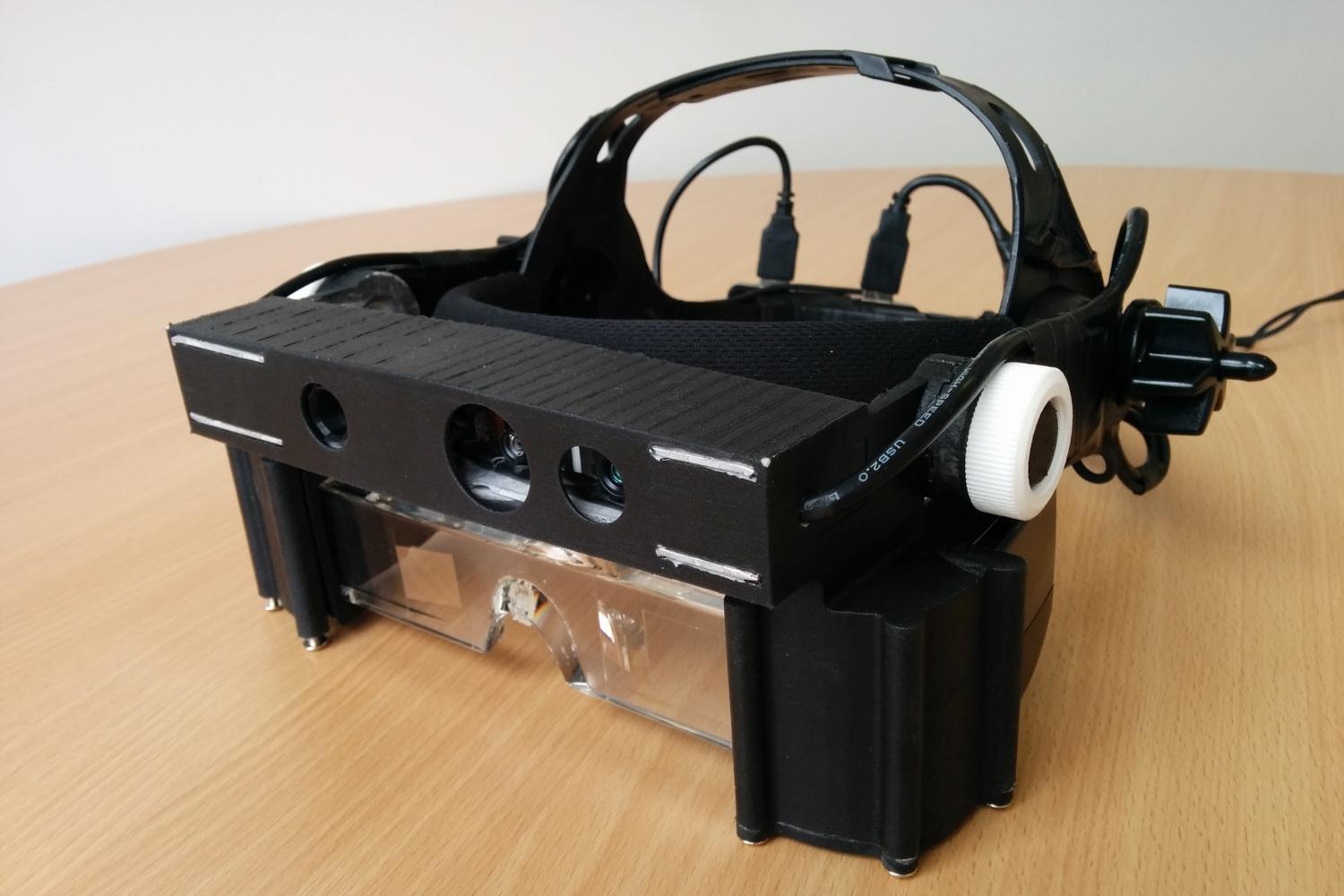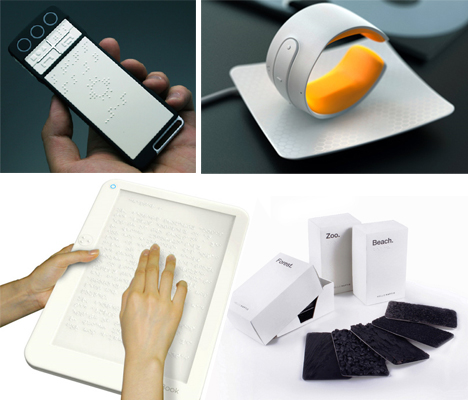Mobility Aids for Visually Impaired Users: Moving Through the World with Confidence
Mobility Aids for Visually Impaired Users: Moving Through the World with Confidence
Blog Article
Discover Ingenious Tools Made for the Visually Impaired
The development of cutting-edge tools for the visually damaged stands for a significant development in availability and self-reliance. Technologies such as wise glasses with AI abilities and mobile applications developed to supply acoustic summaries are improving daily experiences for individuals. Furthermore, wearable tools that employ haptic feedback boost ecological recognition, while contemporary Braille developments offer new means to involve with text. As these devices proceed to advance, their effect on the lives of those with aesthetic disabilities increases important questions about the future of inclusivity and freedom in different facets of life. What exists ahead in this technical landscape?
Smart Glasses for Navigation

Smart glasses designed for navigating are transforming the means aesthetically damaged individuals communicate with their atmosphere. These innovative gadgets use a mix of cam modern technology, synthetic knowledge, and auditory feedback to provide real-time details concerning surroundings. By employing obstacle discovery systems, smart glasses can notify customers to prospective dangers, enabling more secure wheelchair in both strange and familiar setups.
The combination of GPS technology additionally enhances navigation abilities, permitting individuals to receive acoustic directions as they relocate. This hands-free method not just cultivates self-reliance but additionally empowers aesthetically impaired individuals to browse metropolitan landscapes with raised confidence. In addition, numerous wise glasses are furnished with features that recognize spots and street indications, providing contextual info that enhances the individual experience.
Furthermore, the advancement of these tools is consistently progressing, with business working to improve the precision of things acknowledgment and broaden the array of navigational features. As clever glasses end up being a lot more accessible and budget friendly, they hold the potential to substantially change every day life for aesthetically impaired customers. Inevitably, these cutting-edge devices represent a vital step towards inclusivity, offering boosted mobility and a greater sense of autonomy for people navigating the world around them.

Mobile Apps for Daily Living
How can mobile applications enhance the day-to-day lives of visually impaired people? Mobile applications are revolutionizing the method aesthetically damaged individuals navigate their settings, take care of daily jobs, and access info. These applications give vital assistance through numerous capabilities, fostering self-reliance and boosting quality of life.
A number of ingenious mobile applications are made specifically for everyday living. Apps like Be My Eyes attach aesthetically damaged users with sighted volunteers via video clip telephone calls, permitting them to receive real-time assistance with tasks such as checking out labels or navigating unfamiliar spaces. Similarly, Seeing AI, developed by Microsoft, uses expert system to define environments, read text, and determine objects, properly changing a mobile phone into a powerful device for everyday assistance.
Additionally, navigating applications customized for the aesthetically impaired, such as Aira and BlindSquare, supply audio-based instructions and ecological info, making it possible for customers to traverse their environments safely and with confidence. Past navigating and immediate help, mobile apps additionally sustain organization and job administration, with features that help customers establish pointers, develop to-do checklists, and track consultations. In recap, mobile applications serve as essential sources, equipping visually damaged people to lead more independent and meeting lives.
Wearable Technologies for Help
Empowerment through modern technology is progressively evident in the realm of wearable gadgets developed to help aesthetically impaired individuals. These innovative tools integrate perfectly into life, enhancing navigation and supplying important comments to customers. For example, clever glasses furnished with cams can identify faces and check out text aloud, permitting individuals to communicate even more confidently in social and expert settings.
One more remarkable development is the use of haptic responses systems in wearable tools. These systems utilize vibrations or other responsive signals to convey information regarding the individual's setting, such as barriers or adjustments in terrain, improving wheelchair and safety and security. Wearable modern technologies also include wristbands that connect to smartphones, alerting individuals to alerts via refined resonances, hence boosting connection without reliance on aesthetic signs.
As these technologies visit here continue to evolve, they are not only enhancing independence for aesthetically damaged people however likewise promoting a greater feeling of inclusion in culture. By linking the void in between difficulties dealt with in everyday living and the capacity for autonomy, wearable innovations serve as pivotal devices in the pursuit for equal rights and empowerment for those with aesthetic disabilities.
Audio Description Devices
Sound description tools play an essential role in enhancing accessibility for aesthetically impaired individuals, giving them with the capability to involve with aesthetic media. Smart glasses for the visually impaired. These devices use narrated descriptions of vital aesthetic aspects in films, tv shows, and live efficiencies, making sure that customers can totally comprehend the context and emotions communicated through visuals
Sound summary can be incorporated into various systems, including streaming solutions, cinema testings, and live theater. Several preferred streaming services currently include audio summary as an availability function, allowing viewers to browse around here select it quickly. In addition to traditional media, specialized apps also exist, supplying audio summaries for art exhibitions, galleries, and other cultural occasions.
The efficiency of audio summary rests on the ability of the narrators, who have to convey aesthetic information succinctly without diminishing the initial sound. Developments in this area are also paving the means for even more personalized experiences, where users can adjust the level of information and pacing according to their choices.
Braille Innovations and Gadgets
Braille advancements and tools have actually dramatically transformed the method aesthetically damaged people interact with text and details. Modern advancements have actually led to the development of versatile tools that improve proficiency and independence among individuals.
Additionally, mobile Braille notetakers integrate typical Braille input with modern capabilities, helping with note-taking, scheduling, and file modifying on the go. AI-powered visual aids. These small gadgets usually include text-to-speech capacities, connecting the space between Braille and acoustic details
Additionally, cutting-edge Braille printers have actually emerged, permitting individuals to create Braille labels, records, and academic materials effectively. This ease of access cultivates higher participation in educational and specialist atmospheres, ultimately advertising inclusivity.
Moreover, research right into wise Braille innovations remains to increase. Instruments that integrate expert system are being checked out to provide real-time navigating assistance and contextual info, improving the user experience in varied settings. On the whole, these developments show a dedication to empowering visually damaged Web Site people via technology, guaranteeing they can easily accessibility and involve with the world around them.

Verdict
The innovation of cutting-edge tools for the aesthetically impaired considerably boosts freedom and quality of life. These innovations not just foster higher inclusion yet likewise advertise autonomy in daily activities, ultimately contributing to an extra available and equitable culture for aesthetically impaired people.
As smart glasses come to be a lot more easily accessible and economical, they hold the potential to substantially change daily life for aesthetically damaged customers. Mobile apps are reinventing the way visually damaged customers navigate their atmospheres, take care of daily jobs, and access information. Applications like Be My Eyes attach visually impaired individuals with sighted volunteers using video clip calls, enabling them to get real-time aid with jobs such as reading labels or navigating unknown spaces.In addition, navigating apps customized for the aesthetically damaged, such as Aira and BlindSquare, offer audio-based directions and ecological details, allowing individuals to traverse their environments securely and with confidence.The innovation of cutting-edge tools for the visually impaired dramatically enhances self-reliance and high quality of life.
Report this page